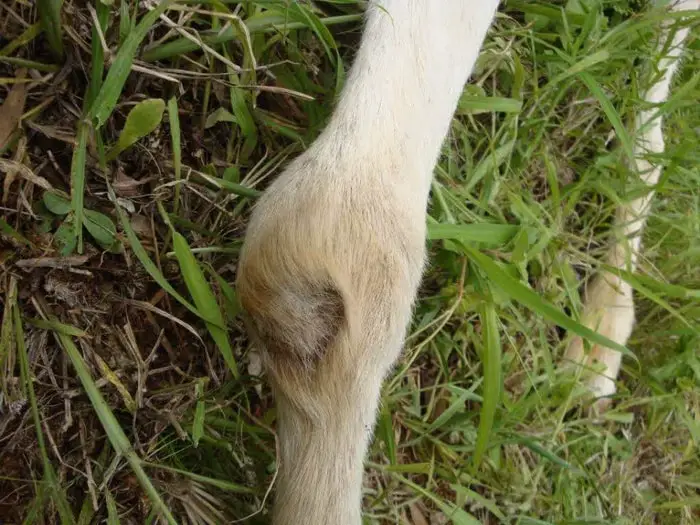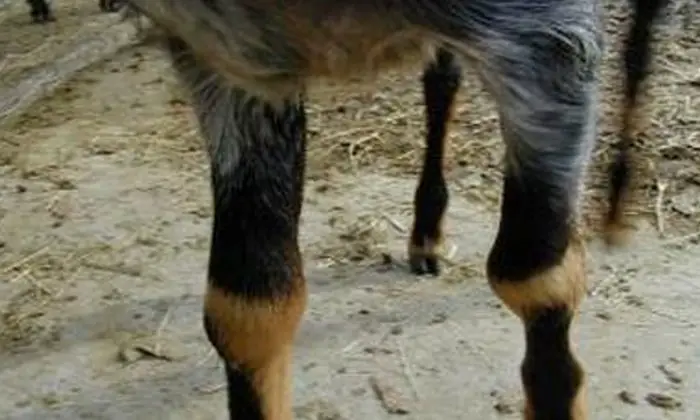Caprine Arthritis Encephalitis or CAE in goats is one of the most devastating and contagious diseases in the United States of America. The disease is caused by Caprine Arthritis Encephalitis virus, similar to Lentivirus of small ruminants that causes ovarian Progressive Pneumonia (OPP) in sheep. The disease causes arthritis in adult goats and encephalitis in kids. The CAE virus is transmitted to goat kids through the colostrum and milk of the mother.
Causes of Caprine Arthritis Encephalitis
CAE in goats is caused by Caprine Arthritis Encephalitis virus, a single-stranded RNA and enveloped virus. The virus is under the genus Lentivirus of small ruminants under the Retroviridae family. The virus also causes OPP in sheep, and interspecies transmission is possible via milk and colostrum of infected animals. The caprine and ovine lentiviruses are commonly known as Small Ruminants Lentiviruses.

How is CAE Passed in Goats?
CAE in goats is highly contagious and spread very rapidly. The disease mainly via milk and colostrum of infected animals. The kids got the infection from their mother. The healthy animals receive the virus from direct or indirect contact with the sick goats. The disease is found in all goat breeds, but dairy goats are more susceptible than other breeds. The pathogenesis of the disease is unknown. The CAE is found in the USA, Europe, Australia, Africa, and Asia.

What are the Symptoms of CAE in Goats?
The clinical signs of the CAE virus manifested in around 20% of the infected goats. The general clinical signs of the disease are:
- Poly-synovial arthritis in adult goats.
- Swelling of the joints and lameness of goats.
- Mostly carpal and metacarpal joints are involved.
- Loss of condition.
- Rough hair coats.
- Stiffness of joints.
- Abnormal posture.
- The goat may walk on its knees.
- Weight loss.
- Encephalitis may be seen in kids and goats less than six months of age. The signs include depression, incoordination, seizures, head tilt, progressive paralysis, and death.
- Respiratory signs are pneumonia, chronic cough, and difficulty in breathing.
- Mastitis in female goats.

Diagnosis of Caprine Arthritis Encephalitis
The general diagnostic methods of CAE in goats are:
- History of exposure of the animals.
- Specific clinical signs, including both arthritis and neurological signs.
- Serological Tests like the Agar Gel Immunodiffusion (AGID) test and ELISA.

How Do You Treat CAE in Goats?
There is no effective treatment for Caprine Arthritis Encephalitis. In mild cases and after early diagnosis, supportive treatment like painkillers and antibiotics can recover in many cases. If the disease progress at and later stage, there is no favorable prognosis. You can go for euthanasia for all affected animals. You trim your goat’s feet regularly and add additional beddings for sick animals.

Prevention of Caprine Arthritis Encephalitis
There is no effective vaccine for the CAE virus is available. The only preventive measure is to reduce the contamination with the affected goats.
- Kids should be separated from the affected dam and feed pasteurized colostrum and milk.
- Maintain strict hygiene and biosecurity of goat farms.
- Culling of infected animals after following specific measures.
- You can go for a half-yearly serological test on the herd and separate seropositive animals.
Final Advice on CAE in Goats
Caprine Arthritis Encephalitis is one of the most devastating viral diseases of goat farms. The disease spread very rapidly and infects young kids. There is no therapeutic treatment and preventive measures for this disease. Young kids die very rapidly due to neurological signs. As a farm owner, you must take necessary preventive measures against CAE in goats.